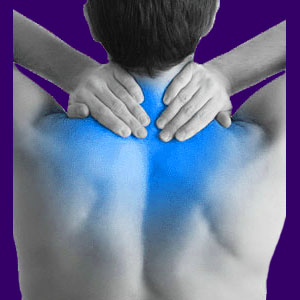
Achieving herniated disc relief is one of the most challenging of all back and neck pain treatment goals, being that curative statistics for most disc pain therapies are extremely disappointing. Like many dorsalgia pain syndromes, most herniated disc conditions are treated using almost exclusively symptomatic modalities; some of which are actually illogically selected for the condition being diagnosed. However, this does not prevent caregivers from getting rich from their sometimes ridiculous efforts to treat patients using techniques that have zero hope of ending herniated disc pain; regardless of whether it is correctly diagnosed or not.
Misdiagnosis of disc pathologies is rampant. In fact, statistics clearly show that the overwhelming majority of spinal disc irregularities are completely asymptomatic.
Meanwhile, the same overwhelming majority of diagnosed disc abnormalities are also blamed for causing pain, regardless of the facts of proven clinical research. None of this makes sense from a scientific viewpoint, but the vision becomes crystal clear when viewed from an economic perspective.
In this essay, we are not going to answer the common question: “How do I find relief from herniated disc?”
Instead, we are going to ask the question: “Is finding herniated disc relief really needed, since most herniations are not the real cause of pain?”
Herniated Disc Relief from Proper Diagnosis
To begin, it is safe to say that modern medical research clearly proves that the vast majority of all herniated discs are completely asymptomatic. These spinal irregularities commonly exist throughout the vertebral column and are found in great numbers in the lumbar and cervical regions of many adults. Unless a herniation definitively affects a neurological tissue, there should be no reason why it should be blamed for causing pain.
Many disc protrusions exist coincidentally to back or neck pain, while a huge number exist in patients who do not experience any pain at all. There seems to be no correlation between the actual size, location or apparent structural severity of a herniated disc and the symptoms it may enact.
Still more illogical is the fact that an incredible number of patients are diagnosed with pain due to herniated discs, when it is clear that the disc is not the source of any symptoms. Remember that the disc itself has no nerves, so a herniation unto itself will not be painful.
Herniations may enact symptoms if they completely close off the foraminal space or if they truly compress the spinal cord to a symptomatic degree. The final possibility for causing pain resides in the theory of chemical radiculitis, which remains a controversial and non-universally accepted causative mechanism in many diagnosed patients.
Unfortunately, what we see most often are herniations that do not fit any of these criteria, but are still being damned as the exclusive origin of pain. Worse still, the pain often exists in areas that could not possibly relate to the herniation, such as above the affected intervertebral level, on the opposite side as the protrusion or in an area that is completely unrelated by innervation patterns.
Disc Pain Relief from Proper Treatment
It is well established that many herniated discs are misdiagnosed. This explains why so many back and neck pain treatments fail, since they are not targeting the real reasons of the pain. This also explains why the majority of major medical associations have changed their member guidelines in the past few years, in order to warn physicians never to blame pain on an abnormal spinal structural issue, without definitive proof of an existent pathological process.
What this teaches us is that most herniations do not require treatment of any kind. Sure, the patient may have pain and certainly does require relief, but the disc might not be the cause. Instead, the herniation may simply be a coincidental factor. However, even in correctly identified pathological disc complaints, the majority of therapies will still never cure the pain, since they do not even attempt resolve the herniation. A patient can take pills their whole life. They can perform special back pain exercises and stretches daily. They can use that little TENS machine each and every hour. That herniated disc will remain right where it is.
None of the usual herniated disc treatments will do anything at all to alter the spinal anatomy, thereby resolving the problematic disc protrusion. The only 2 typical exceptions to the symptomatic rule are nonsurgical spinal decompression and intervertebral surgery.
Do I Need Herniated Disc Relief?
Some treatments actually work, despite having no value or hope for resolving an intervertebral herniation. Other disc-targeted treatments seem appropriate, but do not resolve pain, even if the disc protrusion is resolved structurally.
The logical explanation for the major failure of treatments in relieving herniated disc pain is simple misdiagnosis. In most cases, herniated discs do not cause chronic back pain. Therefore, they do not require herniated disc relief. Instead, proper diagnostic evaluation must be continued to locate the actual source of suffering in the back or neck.
None of the ideas contained in this dissertation are universally applicable to all disc irregularities. This is because a minority of disc abnormalities are truly pathological and may enact chronic pain, numbness or weakness if they are truly creating a verified pinched nerve or spinal stenosis condition. However, these pain syndromes should resolve with appropriate care.
As of writing this essay, I am living with a total of 12 significant herniated discs in my spine. This is more than half of my total number of intervertebral discs. My MRIs look far worse than virtually any that readers have ever sent us. I am still not convinced that any of these disc issues are completely to blame for my continuing pain, since I do not see definitive anatomical evidence.
In summary, we leave you with some valuable guidance: Read more. Learn more. Understand the truths about intervertebral herniations and compare the actual facts to your own clinical presentation. If there is no definitive pathological component, then your herniation might be a non-issue that is merely wasting your time and effort and actually preventing you from finding the neck or back pain relief you truly need from treatment.





